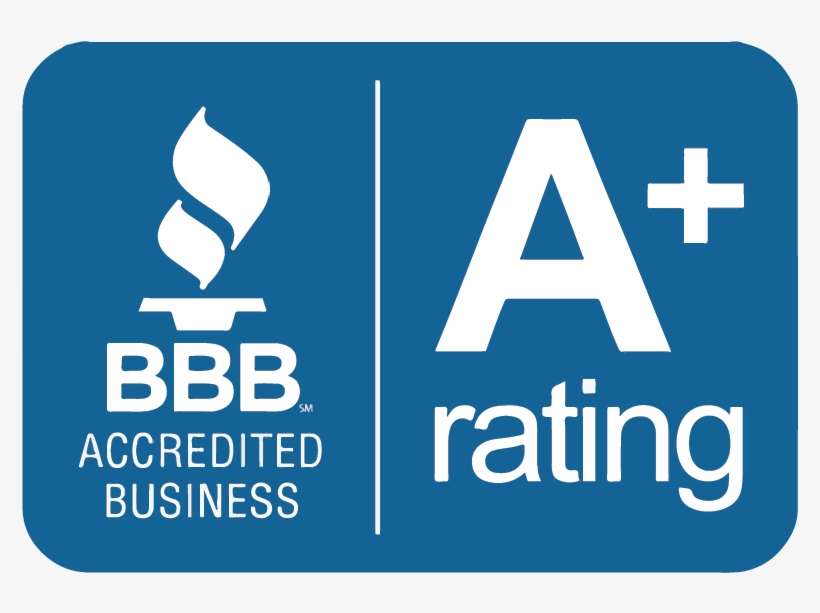Do I Have Depression?
[Self-Test]
Did you know that approximately 5% of adults around the world deal with depression? It is one of the most common mental health illnesses and one of the leading causes of disability.
Many people often wonder if they have clinical depression. Sometimes, it can be hard to differentiate between sadness, grief, and depression.
If you have an interest in learning more about depression and taking a depression self-test, then keep reading on for more information.
Depression Test
Instructions: Try this depression self-test based on official DSM-5 criteria.
Please answer the questions as they would pertain to a 2-week period.
This online screening is not a diagnostic tool. Only a trained medical professional, like a doctor or mental health professional, can help you determine the best treatment for you.
WHAT IS DEPRESSION?
Depression is a mental health illness that influences how someone thinks, feels, and acts. Not only can it cause emotional issues, but it can lead to physical symptoms as well. A depression self-test can help you quickly eliminate whether you think you are just having a period of sadness. Depression and sadness vary drastically. Grief often goes away after a certain period of time, but it can quickly turn into depression.
Finding the cause of depression is a tricky and complicated process. A few common causes that researchers believe contribute to depression are:
- Genetics
- Biochemistry
- Personality
- Environment
For instance, some people may be more predisposed to developing depression based on their genetics. Additionally, those who had an identical twin with depression were 70% likely to also have it. There are also some chemical imbalances in the brain that can contribute to depression symptoms.
Depression Symptoms
Depression can vary between people and sometimes it goes largely unrecognized. In fact, approximately 50% of people with depression are never diagnosed or treated. Google can give you a wide range of results if you type in “do I have depression quiz.’
For that reason, it helps to have background knowledge of some of the signs and symptoms of depression. Some of the more common symptoms include:
- Difficulty concentrating
- Fatigue
- Sleeping too much or insomnia
- Restlessness
- Digestion issues
- Loss of interest in pleasurable things
- Overeating or undereating
- Anxiety
Sometimes, depression can worsen and lead to suicidal thoughts or tendencies. This is part of the reason it is important that depression is addressed.
Getting Diagnosed
Doctors administer their own type of depression test for patients. This is not all-encompassing and there is not a single definitive test that indicates someone has depression. However, a doctor may ask how long you have had symptoms and when they started. He or she may also inquire into your family history and if you abuse any substances like drugs or alcohol.
In most cases – doctors are looking at a two-week guideline for diagnosing depression. This means you have had some of the symptoms listed above for the majority of that time period.
However, there are some subcategories of depression that may be taken into consideration. These include:
- Postpartum depression
- Seasonal affective disorder
- Bipolar disorder
Postpartum depression is a form of major depression that occurs in females during or after pregnancy. Its direct relation with pregnancy is what characterizes its diagnosis. Seasonal affective disorder typically only affects people during the wintertime months. These people may sleep more during these months and have increased weight gain. During the springtime, the symptoms of depression reside.
Lastly, Bipolar disorder is a mood disorder and not necessarily a type of depression. However, it is sometimes characterized by major depression. Not everyone with Bipolar disorder experiences “manic episodes”.
It is also fairly common that these people deal with extreme depressive episodes. If your doctor suspects a mood or personality disorder, they may refer you to a psychiatrist.
Medication Options
Medication is one of the first lines of defense that a physician may throw at you. Many people find relief of symptoms from medication while others may deal with nagging side effects.
Make sure you discuss all of your options with your physician before deciding on which one may be best for you. There are plenty of medications on the market, but the more common ones include:
- Selective Serotonin Reuptake Inhibitors (SSRI)
- Tricyclic Antidepressants
- Monoamine Oxidase Inhibitors (MAOI)
- Serotonin and Norepinephrine Reuptake Inhibitors (SNRI)
Medication Studies
One research study looked at how effective antidepressants are in treating the symptoms of depression. Common medications, such as SSRIs work by increasing the amount of serotonin available.
It is speculated that serotonin and other neurotransmitters play a critical role in depression. Antidepressants are taken every day for at least a few months. This is because there is often a lag period between when you start taking an antidepressant and when you can start seeing the benefits.
The study mainly looked at SSRIs and SNRIs. They found that they were equally effective. Approximately 40 to 60% of people who were on antidepressant medications noted positive results.
On the contrary, 20 to 40% of participants who were given a placebo also reported an improvement in symptoms. The study also found that antidepressants taken for one to two years were beneficial in preventing relapses.
About 50% of participants who did not receive the medication relapsed compared to just 23% in the medication group. Lastly, the researchers looked at the side effects of these medications.
It is largely known that tricyclic antidepressants have more side effects. These include things such as constipation, vision problems, dizziness, and tremors. SSRI side effects are diarrhea, headaches, and sleep issues.
Approximately 15% of participants stopped taking tricyclic antidepressants because of the side effects. Comparatively, the SSRI group sat around 10%.
Medication Studies
Psychotherapy is becoming more popular as a treatment plan for people with depression. It can also be combined with medication treatment.
This form of treatment involves seeing a qualified therapist or psychiatrist. There are many different types of therapy that the therapist may implement such as:
- Cognitive Behavioral Therapy (CBT)
- Family Therapy
- Interpersonal Therapy
- Supportive Counseling
- Problem-Solving Therapy
One of the most common types of therapy is CBT. It uses therapeutic skills that can help a person identify negative thought processes. In return, this can help change behaviors and rewire negative thoughts into positive ones.
CBT Studies
CBT is largely used for the treatment of depression, anxiety, and substance abuse disorders. It can also work towards treating individuals who have both anxiety and depression.
In one comprehensive study, the researchers examined over 100 different studies. They found that CBT was effective for treating depression. When combined with medication treatments, it was more effective than participants who only received medication.
Even if someone has taken antidepressants for years, CBT can be a great tool that helps someone dealing with chronic depression. Typically, you can find CBT-qualified therapists in an outpatient or inpatient center.
Other Treatment Options
Antidepressants and psychotherapy are the two most common treatment plans for depression. However, some people deal with debilitating and chronic depression and don’t respond to other treatments.
In these cases, invasive or more in-depth procedures may be recommended. These procedures include:
- Electroconvulsive Therapy (ECT)
- Vagus Nerve Stimulation
- Transcranial Magnetic Stimulation
One of the more commonly given procedures is ECT. It is largely used for patients with Parkinson’s and severe depression. You will need general anesthesia for this procedure since it requires direct stimulation to the brain. Essentially, physicians use electrical currents in creating seizures within the brain.
This helps in neuropathways and brain chemistry though to be responsible for the symptoms of depression.
ECT Studies
ECT is largely studied amongst individuals who have failed antidepressants and psychotherapy approaches. Because of its invasiveness, it is deemed a last-ditch effort approach.
However, in some situations where people have not taken antidepressants, it is an effective treatment plan. With people who failed antidepressants and psychotherapy, it was still extremely effective in relieving symptoms.
Additionally, continuous ECT was more beneficial than intermittent ECT. This was especially true for individuals with high rates of relapse. The study also showed no indication that patients who received ECT had higher rates of cognitive decline.
Despite its invasive nature, there are relatively minimal side effects. There are no indicators of long-term complications from this procedure. Additionally, it may be a beneficial tool for using before antidepressants and psychotherapy.
Anxiety and Depression
Depression symptoms can often mimic anxiety. In fact, these two mental health illnesses can go hand-in-hand. Surprisingly, anxiety is the most common mental health disorder.
Anxiety affects over 18% of the American population. The suspected causes of anxiety are similar to the ones listed for depression. Anxiety and depression are also considered comorbid disorders since so many people have both of them.
It is also even more common for children to have anxiety with depression, eating disorders, or ADHD.
In worldwide studies, researchers found that people with major depression were almost 50% more likely to also have anxiety. What are the different types of anxiety that people can have?
- Generalized Anxiety Disorder (GAD)
- Panic Disorder
- Phobias
- Obsessive-Compulsive Disorder
- Post-Traumatic Stress Disorder (PTSD)
- Social Anxiety Disorder
In general, those with anxiety feel overwhelmed or fearful of certain contexts or situations. This can lead to a loss in work performance or an inability to enjoy hobbies or relationships.
Symptoms of Anxiety
Anxiety goes behind simple worries throughout your workday. It also can severely affect children and their relationships with other people as well as their performance in school. Like depression, the symptoms of anxiety can vary between people and age groups. However, some of the more common symptoms of anxiety are:
- Restlessness
- High heart rate
- Insomnia
- Obsessions
- Tremors
- Nervousness
- High breathing rate
- Digestion issues
- Difficulty focusing
This is not a completely comprehensive list and those with more specific phobias, social anxieties, or PTSD could have different symptoms. Panic attacks can occur with anxiety.
During a panic attack, someone may feel heart palpitations, light-headedness, chest pains, and more. These are usually more severe symptoms than generalized anxiety.
Studies
One study looked at how the COVID-19 pandemic has affected anxiety and depression rates. They found over 40 studies and comprehensive reviews.
In general, they found that women and youth were the highest groups affected by depression and anxiety. Additionally, regions with higher rates of hospitalizations and COVID-19 rates had higher rates of major depressive disorder and anxiety.
What has this led to?
Researchers suspect that approximately 53 million people developed major depression during the pandemic. Another 76 million people are suspected of having anxiety since the start of the pandemic.
This has largely pointed out the concern of rising mental health illnesses around the world. There has been a bigger push of addressing these common disorders and provide available treatments.
Treatment Facilities
Many people shy away from getting treatment for their depression or anxiety in a facility. Rehab programs and treatment facilities are not solely for those with substance abuse problems.
In fact, many people find high success rates in facilities because of the intensive treatment plans and qualified therapists. It can also allow for opportunities in attending group therapy. The structure of a rehab program can give patients peace of mind for focusing on their recovery.
Many times, your home environment can be one of the triggers for your depression. The additional stressors of work and social relationships can contribute to ongoing symptoms. One of the common misconceptions is that the only available treatment plan in these facilities is an in-patient stay.
However, there are three other types of treatment programs that are beneficial. These include partial-hospitalization, intensive outpatient, and outpatient therapy.
Partial-hospitalization treatment plans are for those who have just left an inpatient facility but still need monitoring. An intensive outpatient rehab sits between inpatient and outpatient therapy. It still provides more intensive therapy for your symptoms, but you do not stay in a facility or rehab center. It often requires multiple hours per week of therapy.
Outpatient rehab is usually the least intensive program. At this point, the person can manage their symptoms mostly at home. Outpatient therapy can help facilitate further recovery and help eliminate relapses.
Visit Acera Health In Costa Mesa For Help With Depression
Depression affects many people worldwide and can cause years of quality life lost. If you think that you or a loved one is suffering from depressive symptoms, then don’t wait any longer. Take our depression quiz now and contact us today about our safe and effective treatment options for helping treat your depression.
Get Depression Treatment in Orange County
If you or a loved one is suffering from depression, Acera Health ensures that you get the help and support you need.







